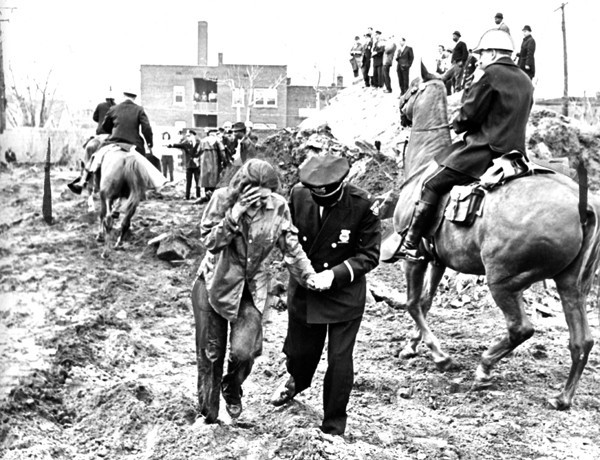
The fight to desegregate schools in Cleveland in the post-World War II era led to a contentious and complicated debate in the city over the issues of race, freedom, and equality. Glenville's Stephen E. Howe Elementary School is central to the tale. On this site, in 1964, one man gave his life for his belief that all children should have equal access to a quality education.
Between 1950 and 1965, Cleveland's black population grew dramatically while the population of Cleveland as a whole decreased. This resulted in overcrowded schools on the city's predominantly black east side and under-enrollment in the predominantly white west side. By the early 1960s, black students were placed on waiting lists for kindergarten and subjected to half-day classes as white schools remained under-enrolled in full-day kindergarten. In response, parents formed the Relay Parents March to Fill Empty Classrooms and organized protests to challenge the inequities perpetuated by the School Board's policies.
School Board President Ralph McCallister agreed to bus some black children to under-enrolled schools in white areas, but to appease white voters his plan included stipulations that black students could not attend physical education classes, eat in the cafeteria, and could only use the bathroom once per day. As a result, African Americans looked to the Cleveland Congress on Racial Equality (CORE) and the United Freedom Movement (UFM) to take action and stand up to the school board.
When whites rioted in Little Italy in January 1964 to protest against black children being bused to schools in their neighborhood, it became clear that McCallister either would not or could not honor his September 1963 agreement to integrate the schools. The construction of new schools was seen as a less volatile alternative, especially as these schools would be built in black neighborhoods in order to maintain segregation in the district. The UFM demanded a stop to the construction of these new schools, arguing that any new schools should be built in racially mixed areas on the east side.
On April 6th, 1964, around 50 UFM protestors arrived at the construction site for the new Stephen E. Howe Elementary school, set to be built in a predominantly black area of the east side's Glenville neighborhood. On the following day, 27-year old Reverend Bruce Klunder - a founding member of the Cleveland CORE, father of two, and white - laid down behind a bulldozer as four protestors laid in front to prevent the construction from taking place. The operator, in his attempt to avoid the protestors in front, backed up the bulldozer without seeing Klunder, instantly crushing the reverend to death.
The following evening, over 2,000 people attended the memorial service for Klunder. Although these attempts to desegregate the schools were considered a failure and the new segregated schools were eventually built, Klunder's death helped to unify the black community to fight against injustice. The fight for equal schools continued, resulting in a 1978 federal court order to desegregate Cleveland's schools through the implementation of a comprehensive busing program.
Audio
Images







